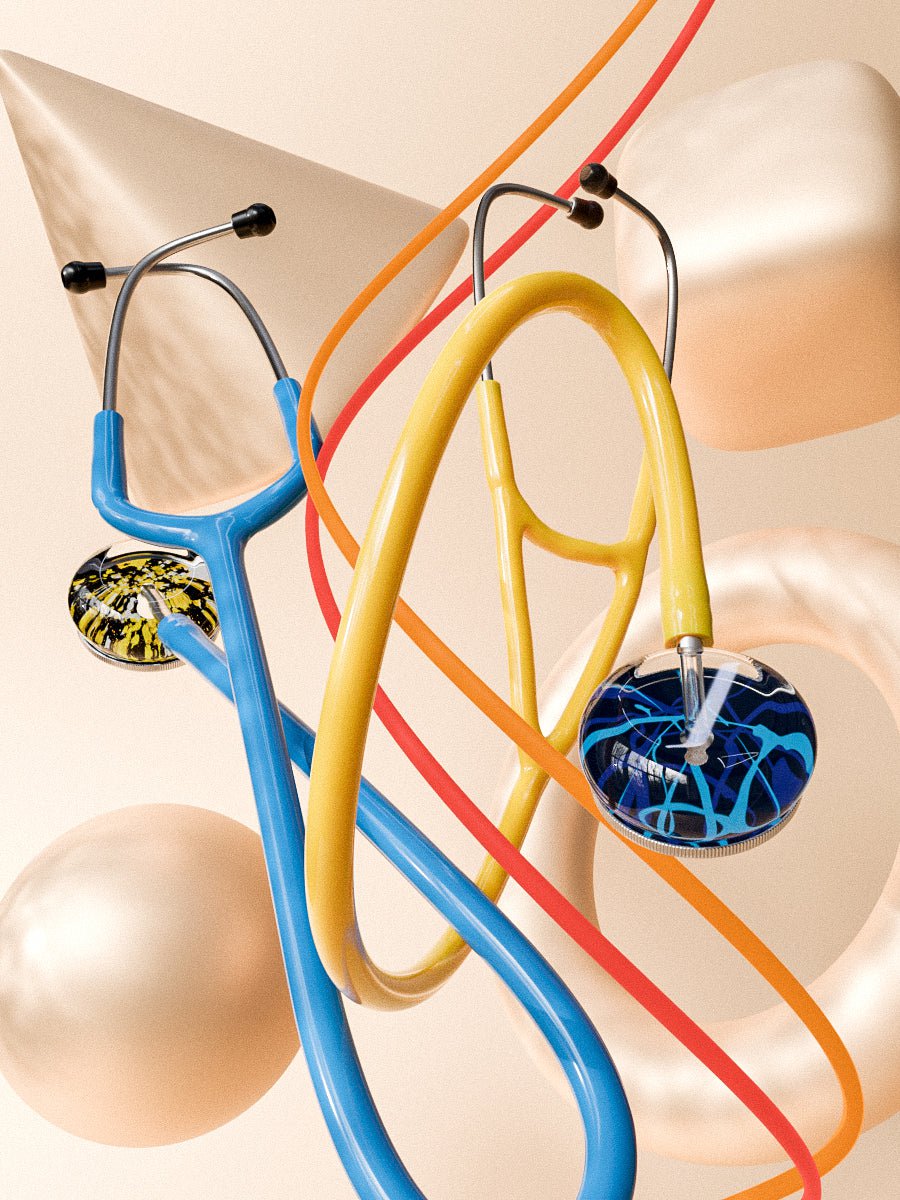Your stethoscope is an essential tool for your practice. It is the first item you can use when finding irregularities in the heart, lungs, intestines, and other parts of the body.
Getting a new stethoscope is exciting but the stethoscope can be tougher to use than you expect. You'll require the best possible fit to ensure you can hear what's coming out of your brand new stethoscope and that you don't hurt your ears.
This brief guide will help you see what you can do when getting your stethoscope ready for use, including a few things you should do to make it all work.
Check the Earpieces
You'll need to review the earpieces in your stethoscope to see that they're easy to fit in your ears. The pieces should be soft and flexible enough to keep the stethoscope in place without bothering your ears.
Most ear tips are made with rubber compounds that are easy on the ears. The features are flexible enough to bend well with your body's movements.
Watch for the sizes of those tips as well. Most stethoscope manufacturers make ear tips in small and large sizes. Find the right size that fits your ears and keeps you comfortable.
Adjust the Earpieces
The next part of preparing your stethoscope involves adjusting the earpieces. These parts should face forward to ensure you can hear out of them, but they must also fit well inside the ears.
Check how well the earpieces secure themselves to the ends of the stethoscope. They should stay firm in their place and point forward. They should also point away from you when you fold up the stethoscope.
You can squeeze the headset near the earpieces if those parts are too loose. You can also pull the headset apart slightly if the pieces feel too firm and are sticking too deep in your ears. Anything that shakes could become loose and could cause the stethoscope to fall out of your ears while in use, which can be even more painful.
Wear It Right
One of the most common problems people have with their stethoscopes is that they wear them the wrong way. Wearing the stethoscope incorrectly will cause it to feel uncomfortable.
Do not put the stethoscope in your ears while the tips point towards them. Insert the tips as they point slightly away from you. The positioning produces a slight anchor that keeps them in place.
Keep the stethoscope at a 15-degree angle. The earpieces should point towards the bridge of your nose at this point. The tips should produce a fit that keeps outside noise from entering while insulating whatever sounds the stethoscope receives.
Adjusting the Stethoscope
Now that you have the stethoscope in your ears, you can adjust it as necessary. The middle part of the stethoscope should feature an adjustable spring that keeps the headset to your ears. The padded features let you adjust the spring's intensity, helping you add or ease tension as necessary.
You can add tension by squeezing near the tension spring. You can also pull the halves out from near the tension spring if necessary.
Holding It Right
The next part of staying comfortable with your stethoscope involves holding your item right. It would help if you held the stethoscope with the chest piece between your index and middle fingers. It is easier to hold the stethoscope this way, plus it keeps the item from tugging on your ears and causing discomfort. It is also easy to get the piece on the skin when you use it right.
Managing the Stethoscope When Not In Use
Another idea is to look at how you carry your stethoscope when moving around or not using it. Keep the stethoscope secure in a tight place when not in use. Never stick it in the pocket of your lab coat or your scrubs. Excess friction while in storage or transport will cause the earpieces to become loose.
It becomes harder to adjust and secure them at this point, potentially making them uncomfortable. It could also harm the seals in the tubes that influence how the sounds appear while in use. Keep your stethoscope in a secure spot to prevent its earpieces from shifting to where you can't see them the right way.
Do's and Don'ts of Using Your Stethoscope
There are a few things to consider when using your stethoscope the right way while also staying comfortable:
- Do replace the earpieces every two years. Your earpieces will naturally weaken with age and regular use.
- Do change your stethoscope if the tubing starts to feel hard. The PVC material in your stethoscope will become hard as it contacts oils in the patient's skin. A hardened stethoscope is tough to use, plus it can make you feel uncomfortable due to its body not being overly flexible.
- Do clean your stethoscope after each patient to prevent bacteria from spreading. Regular cleaning also keeps earwax, debris, and other items from building up on your earpieces. You can use mild soapy water, plus isopropyl alcohol is an appropriate disinfectant for your needs. An ethanol-based hand cleaner is also useful if water isn't available.
- Don't use your stethoscope over bare skin until necessary. The only skin that should be exposed is the area you're going to place the stethoscope on for measurements. The effort prevents oils from getting on the stethoscope is impacting its general body.
- Don't immerse the stethoscope in liquid while cleaning. It can cause the stethoscope to harder and become slippery, making it tougher on your ears.
- Don't try to adjust the pressure in your ears to improve how you wear the stethoscope. Any changes in pressure will stay in the Eustachian tubes inside the ears. Any sudden pressure adjustments can make it harder for you to hear what your stethoscope reads.
- Don't hesitate to ask any other workers to listen in on whatever you are hearing. You might need to ask someone to listen and confirm whatever is happening at a time. Asking for a second opinion can help you ensure you are aware of what is happening with your patient.





